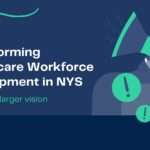Community-Programs Tag Archive

We are a nonprofit workforce development strategy & design agency helping organizations create human-centered workforce development solutions so they can grow, recruit, and retain an engaged, diverse and thriving workforce.
A leader in innovative workforce development solutions.
1 Main Street • Canton, NY 13617
Phone: (800) 516-9693 • Monday – Friday, 8:00 am – 4:00 pm
Quick Links
Solutions
Copyright © 2022 - Health WorkForce New York (HWNY)





